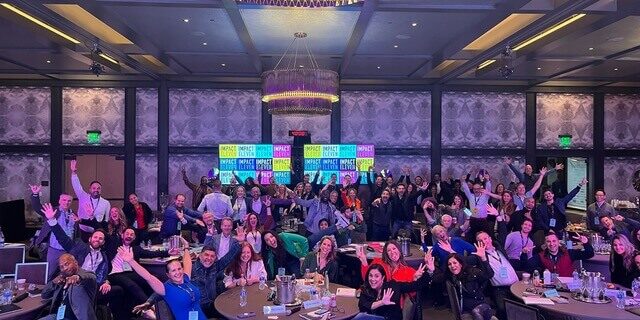 Are you in the technology business?
Are you in the technology business?
In today’s world, the truth is that every company is in the technology business. Tech is affecting every aspect of our lives, and IT leaders have an unprecedented opportunity to impact the business — if they’re willing to evolve their own perspective on the traditional role of IT.
Joe Topinka is an innovative, forward-thinking technology leader who understands that tech is playing a crucial part of the growth strategy in any successful business. The role of the CIO is changing, and he’s a perfect case study of how and why that change is happening inside companies around the country. In his role as CIO at Red Wing Shoes, Joe led IT by building high-trust relationships within the organization and positioning IT employees as business partners, actively involved in every aspect of the business strategy.
The Red Wings Shoes Story
Joe arrived at Red Wing Shoes six years ago. The organization hadn’t evolved its go-to-market strategy and was relying on traditional retail and distribution channels. Growth was flat and IT was largely viewed as a necessary evil — a cost, not a driver of growth and innovation.
Joe was brought in as the company’s first CIO, and he started making big changes to meet the company’s growth goals. Six years later, Red Wing Shoes has seen a 75% growth in revenue. The company has gone from being invisible online to being a major digital player, with a global multi-channel presence.
Here’s how Joe and his team made big changes from the inside out.
4 Ways CIOs Can Innovate to Drive Business Growth
1. Learn everything you can about the customer.
First, Joe got to know Red Wing’s customers. He visited dozens of stores. He spent a lot of time learning about customers’ challenges, and asked questions about what barriers they faced when they worked with Red Wing. He heard from customers that Red Wing was behind the times. Customers couldn’t order quickly with modern technology. One example: Red Wing sometimes sold shoes out of mobile stores. They didn’t have a POS system onboard. Instead, they were writing down orders (and customers’ credit card numbers) and bringing the paper orders back to the distribution centers to key in. Customers weren’t happy with that process, and it affected the way they saw the Red Wing brand.
Through interacting with customers, Joe found a few common themes and problems, and he saw a major opportunity to build new systems that delighted customers, instead of frustrating them. “If you use technology right, you can improve the customer’s perspective on the company overall,” he says.
2. Position IT as a business partner.
Joe knew he’d need to create an internal process to sell, architect, and implement all of the new ideas. He started an IT business partner program to embed IT in the business. “It’s not ‘us vs. them,’” he says. “We’re all on the same team.”
He hired an IT business partner for each of Red Wing’s functional departments (wholesale, retail, supply chain, and enterprise solutions). People inside the company took these new employees seriously, because they each reported directly to the CIO.
The IT business partners were proactively involved in strategic planning. “I learned early in my career that to be successful, I needed to speak the language of IT and the language of business.” So, he coached the IT business partners on how to do that. And, Joe rebranded IT as BT, “Business Technology,” to drive home the idea that technology, and the employees who work on technology, are a crucial part of business growth. That rebranding helped educate the organization about how IT was evolving to be a catalyst to drive sales growth and improve customer experience.
3. Help company leaders ask, “What if?”
Once the IT team understood the company’s customers and the challenges they needed to solve, they created a marketing campaign to pitch their new ideas to the C-suite. The team started by asking, “What if?” What it would be like if customers could buy anytime, anywhere? What if all of the company’s IT solutions were aligned to promote major growth?
Then, they wrote short stories about what the company could look like in the future, with all of those challenges addressed and solutions implemented. They called their story “Red Wing 2.0.”
The executive team was impressed. They’d always thought of IT as a group responsible for support tasks, like setting up the phone system and creating reports. Now, they saw IT leading strategy and growth. Technology solutions were mapped to the company’s highest-level strategic goals. Joe and his team used “Red Wing 2.0” to propose and implement a major multi-channel digital solution that propelled Red Wing forward.
4. Build strong internal relationships and be as transparent as possible.
Joe and the IT team knew that in order to create major change, they needed buy-in from their colleagues internally. For IT to deliver maximum impact on the business, the CIO has to start by building strong relationships. Joe’s advice to CIOs: Spend as much time with the C-level team as possible. Learn and understand the business and speak the language of the C-suite.
IT can often be a mystery for other functional leaders at a company. So, Joe made changes to make IT as transparent as possible. He wanted everyone to know what IT was working on, and how they were using their resources to architect real, relevant solutions. At Red Wing, he created an open project dashboard (that he named the “Project News Network”). Anyone could see what the IT team was working on, the status of open issues, and timelines for completion. That transparency helped IT work hand-in-hand with the rest of the business.
We’re all in the technology business these days. Great leaders embrace that fact and look for ways to integrate IT into every business decision.
Learn more from Joe Topinka on his on his IT strategy blog, or check out his book, IT Business Partnerships: A Field Guide. He recently accepted a new role as CIO at SnapAV.
Ryan Estis helps progressive companies embrace change, attack opportunity and achieve breakthrough performance. Delivering more than 75 live events annually, Ryan provides high-impact keynote presentations and professional development in partnership with the world’s best brands. Learn more about Ryan.










